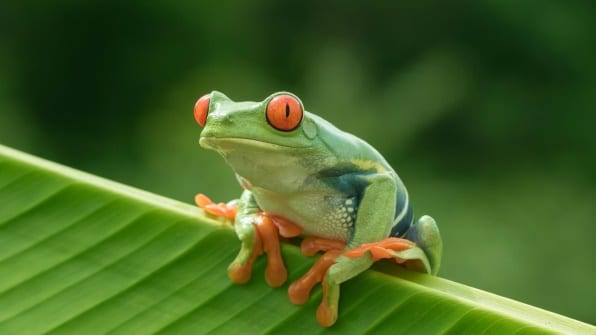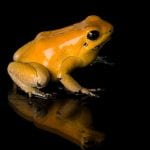Amphibians may look like hardy, healthy animals, but these are also prone to bacterial and viral infections. If you have a pet frog or toad and you want to learn how to take care of your pet better, then you must get to know the most common viral and bacterial diseases and ways to protect your pets.
Viral infections vs. bacterial infections
Viral Infections in amphibians are common in amphibians, and a pet owner should understand how viruses are transmitted and how quarantine can help prevent the spread of many viral diseases. At present, there is a deadly viral amphibian disease called chytridiomycosis. This is a deadly viral disease that’s rapidly moving across South America and is now close to an area known as Panama’s Darien region. This region is known as the last place to be free from the disease.
The rapid spread of the virus has made the Panama Amphibian Rescue, and Conservation Project members worried. The institution aims to build efforts to rescue around 20 species of frogs that could be in danger of extinction. Chytridiomycosis is responsible for the decline and the extinction of many species of amphibians in the world.
Meanwhile, identification and the prevention of bacterial in amphibians is not an easy task, and a pet owner needs the help of a veterinarian. Usually, a sign that your pet frogs and salamanders are suffering from a bacterial infection if you notice a sudden decline in their numbers while viral infections tend to take time. Signs and symptoms of bacterial infection include poor appetites, weight loss, edema, cloudy eyes, and hemorrhages, or bleeding in the skin. It’s important to identify these symptoms early to get early treatment, avoid complications, and prevent the spread of diseases.
Quarantine your sick pets

In almost all animal pets, and captive animals, sick individuals should be separated from the healthy ones. You need to spot early the sick animals so you can quarantine these right away. Any animal that has early symptoms of viral and bacterial infection must be separated right away.
So, where do you place infected amphibians? Sick pets must be placed in a small terrarium with a suitable substrate that you can easily clean and replace and just the basic tank accessories like a perching area, food, and water dishes or a water feature if you have an amphibian that needs water to bathe or swim on.
Ensure that the quarantine tank must accommodate the number of pets you have to place in and should also have adequate lighting, air circulation, and air filters should be in place to control smells.
To quarantine your pet, wear protective cover like gloves, aprons, and masks before handling pet pets. Place each one inside the quarantine tank and just let them be. Don’t change the feeding times and cage maintenance times.
Ensure that pets that have been quarantined have access to clean water and healthy food to build up their immune system. And of course, follow any set regimen that your vet has set.
Quarantine periods may vary, but the most common has to be around 6 months. This is the best time to rule out any illnesses or infections. Keep a record of your pet amphibian’s progress and any changes that you may have noticed with your quarantined or healthy pets.
Build the health of unaffected pets
One very important thing to consider to prevent the spread of infections is to improve the health of non-affected pets. If you’re already feeding your pet the right diet, ask your vet or dietician about a special diet that will build your pet’s resistance.
Give your pets more healthy, fresh foods, including fresh live food. If your pet frog or salamander prefers fresh live flies and crickets, serve these fresh from the pet store. It’s important to use only organic food or food that was cultivated from natural sources.
Food should also be given appropriately. Some viral and bacterial infections may be due to improper handling of food, and thus, you must be careful when feeding your healthy pet amphibians.
Build up your pet’s resistance to disease

To keep your pet safe and disease-free, provide supplements to its diet. You can ask your vet for an all-around multivitamin and mineral supplement that you can use. Most captive amphibian’s diets are incomplete in a sense that it lacks the most important nutrients. By adding multivitamin supplements, you can build up your pet’s health and help fight bacterial and viral infections overtime. Just among the most important supplements are vitamin A, C, calcium, and amino acids.
Tank clean up and maintenance
Frequent cleanup of your pet’s tank or enclosure is very important. You need to clean, not just the tank but all the accessories as well. Include your pet’s perches, rocks, artificial plants, crevices, boxes, screens, and many more.
The ideal tank cleaner is something you should consider when cleaning your pet’s enclosure. Some may recommend using a particular product or cleaning solution, but we prefer to use natural methods to clean the tank.
Use hot water to remove viruses and bacteria. Do not use soap or dishwashing soap. To properly clean an amphibian’s tank, remove everything and splash hot water around the tank exteriors and interior. Boil more water to wash the different materials and accessories in your pet’s tank.
When to do you clean up? You must conduct a tank general cleaning at least twice a month, especially for small tanks. For tanks with a water feature, replace the water frequently. Remember that amphibians may poop and pee in the water, and this is a way for every individual inside the tank.
Spot clean the tank too. As soon as you see any kind of dirt, poop, or soaked bedding, remove these fast. Other cleaning materials you may have in your home are lemons, apple cider vinegar, and baking soda.
To use vinegar in warm water, just spray this all over the area or inside the tank. Vinegar is a natural antiseptic and will easily kill pests that cause illnesses. Still, another affordable and effective tank cleaner is baking soda.
Baking soda has a natural ability to remove odors and stains. You can sprinkle this all over a clean tank to remove odor. You may also combine baking soda and water to make a paste to clean the smelly and dirty areas of the tank.
Personal cleanliness and safety

New pet frogs or salamanders are possible vectors of diseases, and this may also be true for you. If you have sick pets, always wash your hands or disinfect your hands to avoid transferring diseases to your healthy pets. You may also wear personal protective devices like masks, gloves, aprons, and goggles.
And if you’re sick yourself, avoid contact with your pets. Although there are no amphibian diseases that may be transmitted to humans, it is still important to be very careful. A disease called salmonella is a bacteria that is found in reptiles and amphibians. Although salmonella is asymptomatic in animals, this can cause severe digestive tract disorders such as vomiting and diarrhea in humans.
So, beware of getting salmonella from your pets and passing it on to others by frequent handwashing. Wash your hands before handling your pets and afterward. Wash your hands before and after handling pet food or cleaning the pet enclosure. Also, use anti-bacterial soap or spray and at the first sign of salmonella infection (fever, diarrhea, vomiting, and headaches, consult your doctor at once.
Take your pet frog to the vet
Although frogs are tiny and are often neglected as a pet, it’s necessary to change this notion. These are not just frogs, toads or salamanders but are important and loved pets. Therefore, these deserve good care from a qualified and dedicated vet.
Choose a vet or preferably an exotics vet to better care for your pet frogs. As soon as you take your pet home, schedule a visit to establish baseline data. A vet visit must be done yearly or for any questions and more frequently with sick toads and frogs.
How can you tell that a frog is sick? Watch out for signs like inability to eat, diarrhea or loose stools, lethargy, and drowsiness. A frog will know dinner time or playtime and if your pet misses dinner time then
And if your pet has been quarantined for suspected bacterial or viral infection, consult your vet on what to do and how to understand signs of pets to be quarantined and how to survive day after day taking care of sick pets.
Conclusion
Most amphibians that receive the right care and with good husbandry survive bacterial and viral infections unscathed. Also, it is easy to prevent bacterial and viral infections by following simple, practical techniques to keep your pet’s health and resistance up and by personal cleanliness and safety. Never overlook salmonella, and don’t forget to quarantine sick frogs as well as new pets before introducing it to a communal tank.



